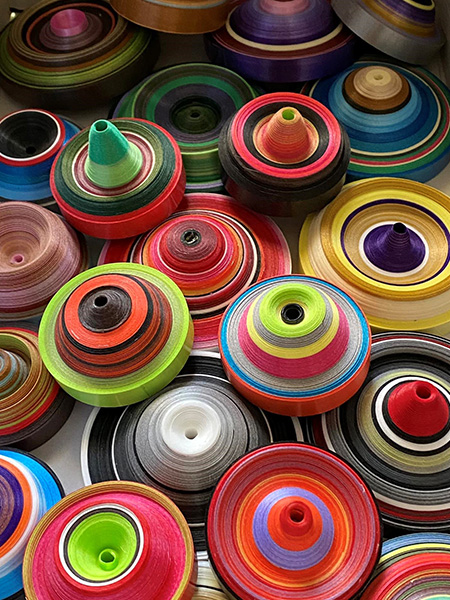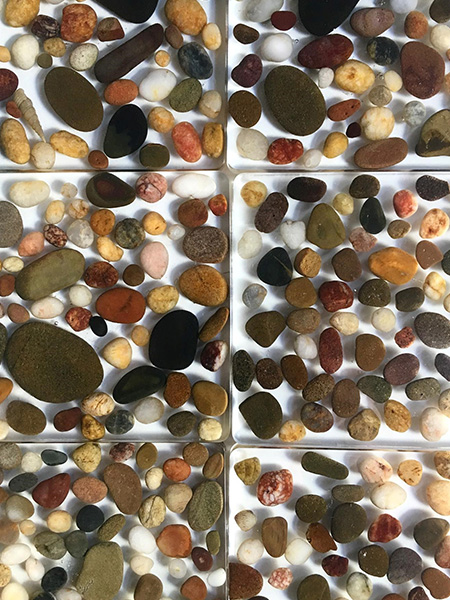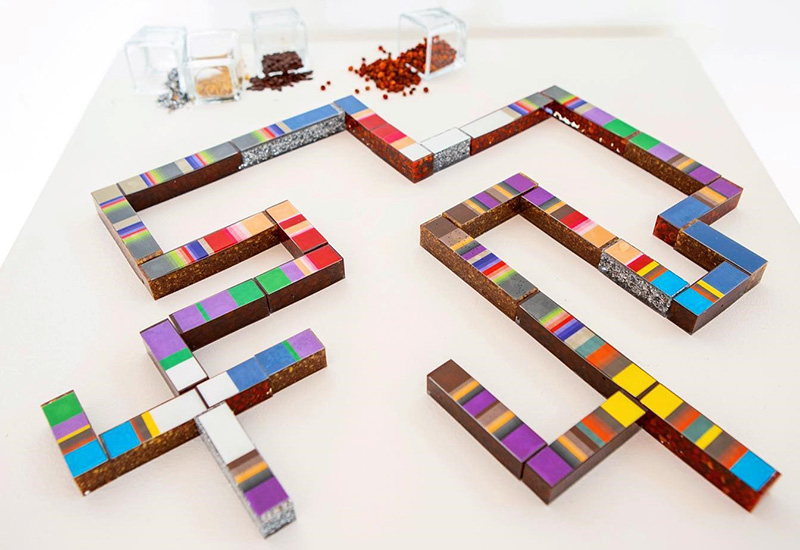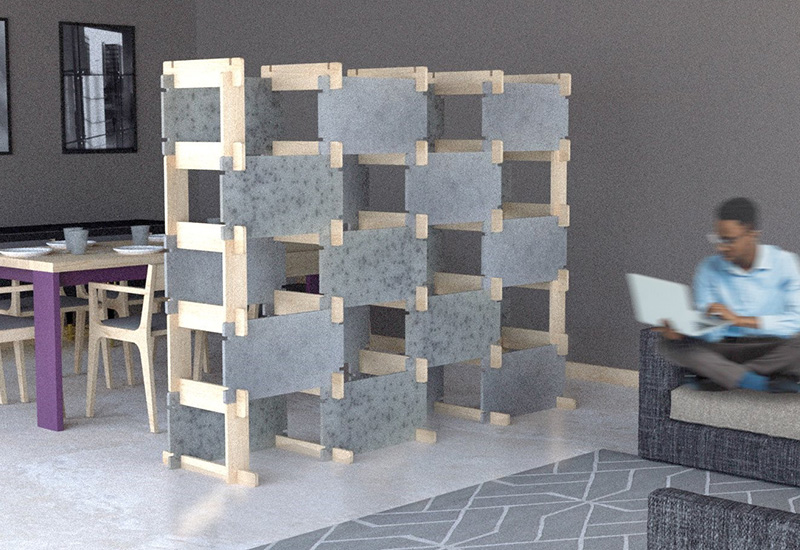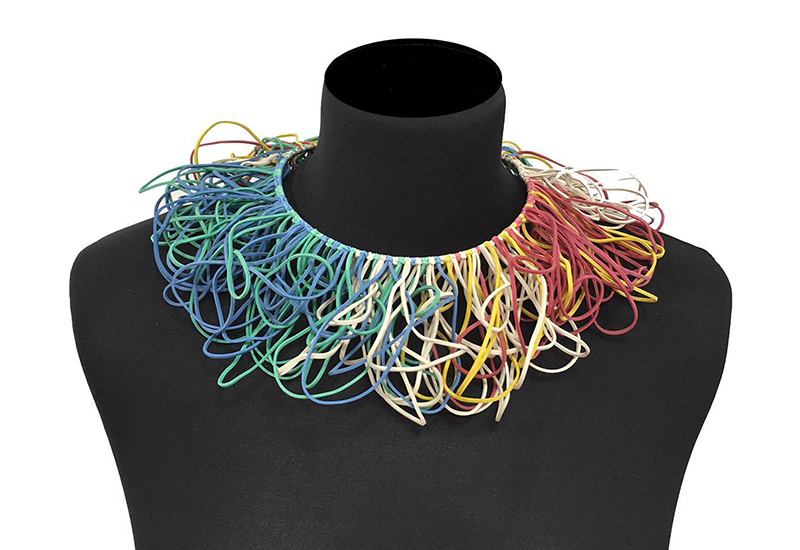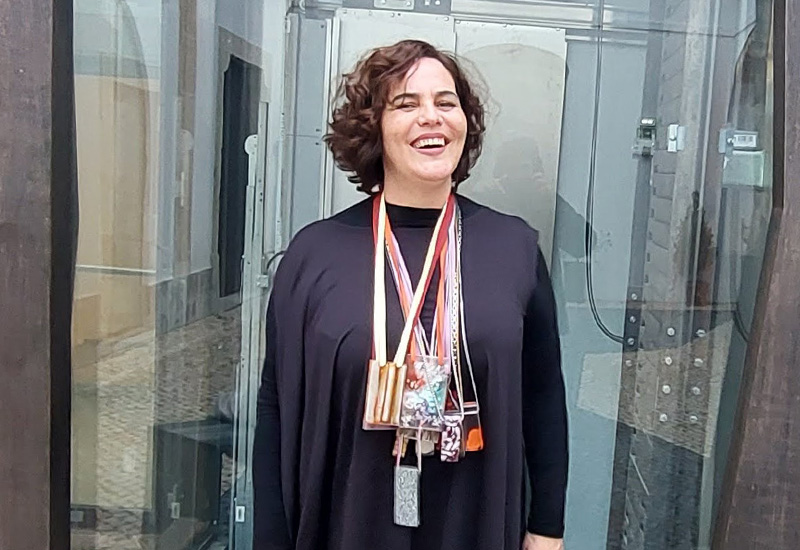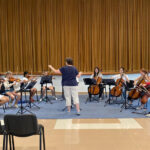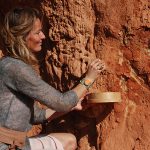Following my article on Loulé Criativos Design Lab in last month’s edition, the first of the resident artists I would like to introduce you to is Sandra Neto.
Originally from Loulé, Sandra moved to Lisbon when she was 18 to study and work. She returned to the Algarve 15 years ago, only planning to stay three years but ended up starting a family. She has lived here ever since.
Two years ago, she started MESS (Material research, design and development). Working as an architect, Sandra knows that architects, designers, decorators, builders and other professionals are increasingly interested in working with eco-conscious materials.
Inspired by the beautiful yet chaotic colours and textures of the natural world, MESShas been working to create a series of ‘green’ interior surfaces. She uses somewhat unusual materials destined for the rubbish and turns them into a series of stylish tiles and panels that can be applied to walls, ceilings, doors, countertops and even furniture.
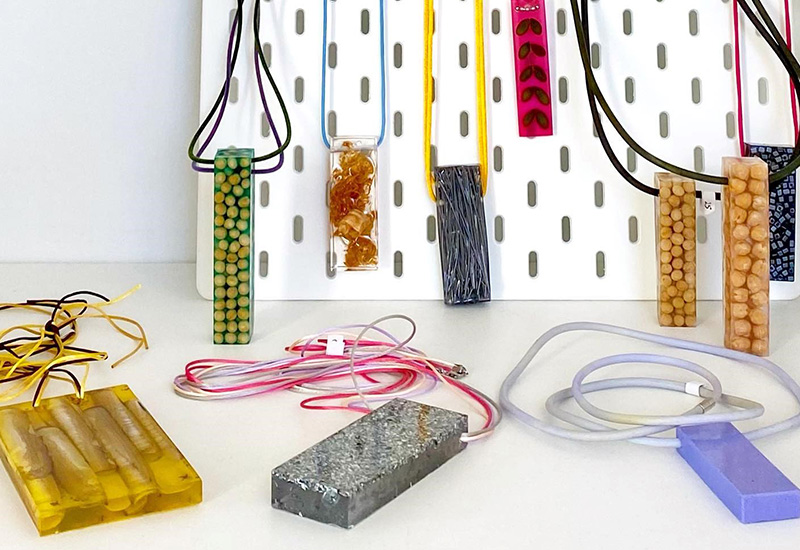
What do I mean by unusual? Well, how about beans?
Always on the lookout for new materials to work with, Sandra told me how she was at a supermarket checkout and they were about to throw away packets of out-of-date dried black beans. She quickly put up her hand and asked if she could take them.
She then ‘immortalised’ them in a bio-based resin and created a modular system of space dividers she calls TRA.MAS. Supported by a structure of solid wood, the modular characteristics mean it can be easily assembled into varying heights and lengths, which allows you to divide, hide or simply decorate different areas of your house without the need to carry out any building work.
But beans are by no means the only material Sandra uses. She’s always on the lookout for things destined for the rubbish heap and finding ways to bring them back to life.
Shopping at the Palácio Gama Lobo
I think the best way for us to get a sense of all the different materials MESS uses is to pay a visit to the boutique shop of the Loulé Design Lab in the Palácio Gama Lobo in Loulé. Here Sandra showed, and even modelled for me, the collection of resin jewellery, mainly necklaces, she has put together from prototypes and samples of her surfaces that, as ever, she didn’t want to go to waste.
One man’s trash is another woman’s treasure
She gets her materials from all kinds of unlikely sources. She goes hunting for treasure in building sites and inside her clear resin necklaces, you can find anything from old plaster to wall paint particles. She even had some sparkly ones made from waste aluminium fillings that, once clumped together, hardly use any resin and make solid glistening building blocks.
She looks to nature, as well, and uses local ‘tubular’ grasses, shells and pebbles. She even had a necklace displaying a pinch of orange sand (pinched from the island of Culatra).
And, raiding the kitchen cabinet once again, there were, of course, a few types of bean necklaces, as well as various kinds of seeds and even multi-coloured pasta (all of which make the funkiest tiles and panels). While we’re on the subject of necklaces, she has also made the most fun and colourful “Victorian Collars” using elastic bands.
New game to play
Sandra also developed a bio-resin board game called DOMIN.OR. Composed of twenty-eight stones, handmade with pine needles and various kinds of dehydrated berries, it essentially works like dominoes but with colour and is designed to be helpful to activate and improve the minds of neurologically compromised seniors.
The latest project
After Christmas, Sandra found a way to use ribbons that would again be thrown away to make the most bright and rather hypnotising coat hooks – and she’s currently working on a table.
House made of beans
Now, Sandra admits that these, what she calls ‘conceptual concepts’, may not be for everyone. Working as an architect, she admitted that nobody has wanted her to make a house of beans yet! And indeed, they may be more suited to restaurants and hotels as a statement piece. But it’s good to search for alternatives and these unusual surfaces could well be the building blocks of the future.
www.facebook.com/mess.materials
www.instagram.com/mess.materials
